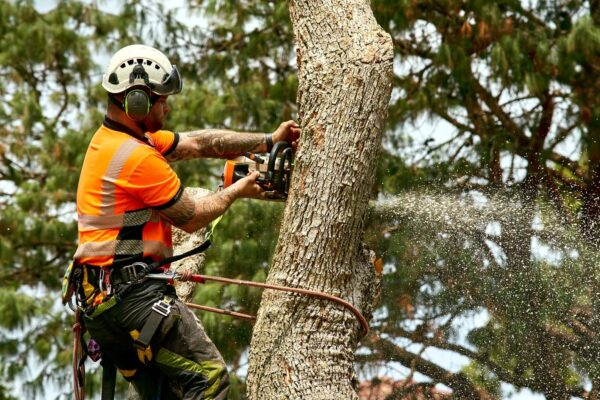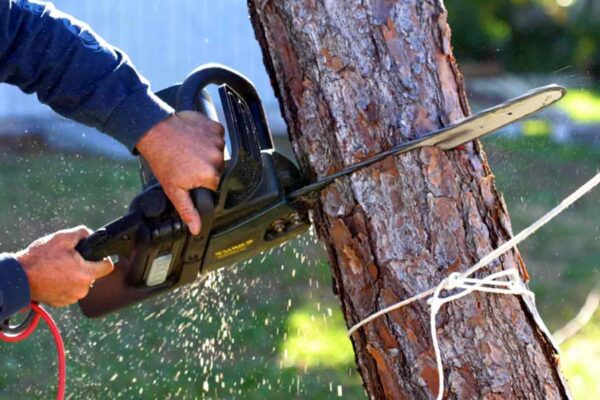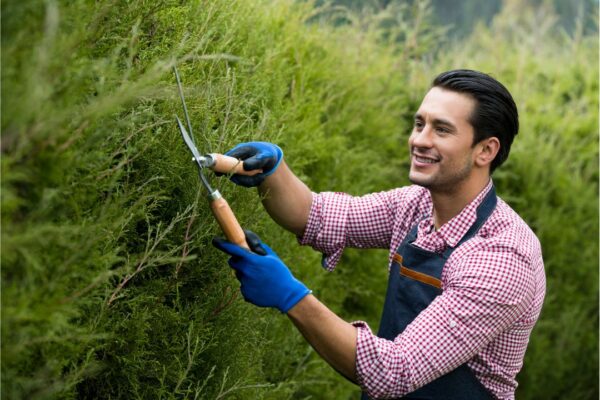
Mastering Tree Removal in the Blue Mountains: A Comprehensive Guide
In the beautiful Blue Mountains, tree removal is a necessary task for maintaining safety, preserving the natural ecosystem, and optimizing the landscape. Whether it’s for clearing space for construction, mitigating the risks associated with dead or diseased trees, or addressing overcrowding, understanding the basics of tree removal is essential. Understanding the Basics of Tree Removal Tree removal Blue Mountains is not a decision to be taken lightly. It is important to weigh the benefits and drawbacks, as well as consider the impact on the surrounding environment. Here are some key points to consider: Identifying Different Tree Species in the Blue Mountains The Blue Mountains, located in New South Wales, Australia, are a breathtaking natural wonder known for their stunning landscapes and rich biodiversity. Within this majestic mountain range, a diverse array of tree species can be found, each with its own unique characteristics and role in the local ecosystem. Understanding the intricacies of these trees is crucial, especially when it comes to tree removal and conservation efforts. Let’s delve deeper into the fascinating world of trees in the Blue Mountains. Native Trees and Their Characteristics One of the most remarkable aspects of the Blue Mountains is the abundance of native tree species that call this region home. These trees have adapted over centuries to thrive in the local climate and soil conditions, making them an integral part of the area’s unique ecosystem. Among the native trees found in the Blue Mountains are the Sydney Blue Gum, Blackwood, and Mountain Devil. The Sydney Blue Gum (Eucalyptus saligna), also known as the Blue Mountains Ash, is a towering tree that can reach heights of up to 70 meters. Its distinctive blue-gray bark and glossy green leaves make it a striking sight against the backdrop of the mountains. This species is not only visually appealing but also provides valuable habitat and food for a variety of native wildlife, including koalas and various bird species. Learn more about essential tips for effective tree removal. The Blackwood (Acacia melanoxylon) is another native tree species that thrives in the Blue Mountains. With its dark brown to black bark and dense foliage of feathery leaves, the Blackwood adds a touch of elegance to the landscape. This tree is highly valued for its timber, which is known for its strength and durability. Additionally, the Blackwood serves as a vital food source for native insects, birds, and mammals. The Mountain Devil (Lambertia formosa) is a unique native tree that showcases vibrant red flowers, attracting native birds and insects. Despite its name, the Mountain Devil is not as menacing as it sounds. In fact, it is a small to medium-sized shrub that can reach heights of up to 3 meters. Its leathery leaves and unusual flowers make it a fascinating addition to the Blue Mountains’ flora. Invasive Tree Species and Their Impact While native trees play a crucial role in maintaining the delicate balance of the Blue Mountains’ ecosystem, invasive tree species pose a significant threat to this fragile harmony. Invasive species are non-native plants that have been introduced to an area and have the potential to outcompete native plants, disrupt natural processes, and negatively impact biodiversity. Tree removal efforts often target invasive species such as the Camphor Laurel and the Sycamore Maple. The Camphor Laurel (Cinnamomum camphora) is a fast-growing evergreen tree that was introduced to Australia from Asia. It has become highly invasive in the Blue Mountains, spreading rapidly and outcompeting native vegetation. The tree’s dense canopy shades out other plants, reducing biodiversity and altering the natural habitat for native wildlife. Additionally, the leaves and berries of the Camphor Laurel contain toxic compounds, further exacerbating the negative impact on the local ecosystem. The Sycamore Maple (Acer pseudoplatanus) is another invasive tree species that poses a threat to the Blue Mountains’ native flora. Originally from Europe, this deciduous tree has a rapid growth rate and can quickly establish itself in new areas. Its ability to produce a large number of seeds and its aggressive root system make it a formidable competitor against native plants. As the Sycamore Maple spreads, it disrupts the natural balance of the ecosystem and reduces the availability of resources for native species. Efforts to control and remove invasive tree species in the Blue Mountains are essential for preserving the region’s unique biodiversity. By managing these threats, conservationists aim to protect the native trees and restore the delicate balance of the ecosystem, ensuring the continued beauty and ecological health of this remarkable natural wonder. Tools and Equipment for Tree Removal To successfully remove a tree, having the right tools and equipment is crucial. Consider the following factors when selecting the tools for your tree removal project: Removing a tree is not a task to be taken lightly. It requires careful planning, precision, and the use of appropriate tools and equipment. By choosing the right tools, you can ensure a safe and efficient tree removal process. When embarking on a tree removal project, it is important to have a clear understanding of the tools and equipment needed. This will not only make the job easier but also help you achieve the desired results. Essential Tree Removal Tools Here are some essential tools you’ll need for tree removal: These tools are the foundation of any tree removal project. They are designed to make the process easier and more efficient, allowing you to safely remove trees of various sizes and types. Choosing the Right Equipment for Different Trees When selecting equipment, consider the specific characteristics of the tree you plan to remove. For example, a larger tree may require heavy-duty equipment, while smaller trees may be more manageable with standard tools. It is important to assess the size, type, and condition of the tree before choosing the equipment. For larger trees, you may need specialized equipment such as a hydraulic tree spade or a crane. These heavy-duty tools can handle the weight and size of the tree, making the removal process smoother and safer. On the other hand,…


